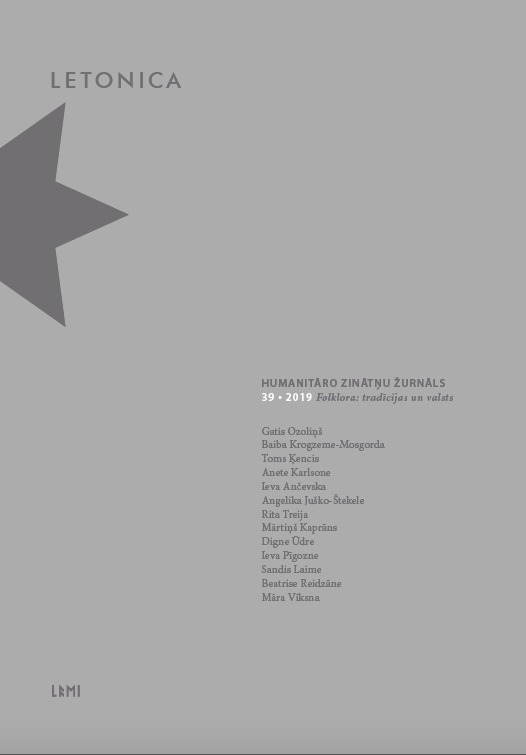Tautastērpa lietojuma divējādā daba Padomju Latvijā
The Dual Nature of the Use of Folk Costume in Soviet Latvia
Author(s): Anete KarlsoneSubject(s): Customs / Folklore, Ethnohistory, Oral history, Recent History (1900 till today), Cultural Anthropology / Ethnology, WW II and following years (1940 - 1949), Post-War period (1950 - 1989), Sociology of Art, Politics and Identity, History of Art
Published by: Latvijas Universitātes Literatūras, folkloras un mākslas institūts
Keywords: folk costume; culture of the soviet Latvia; Song and Dance Festival; socialist festivals; ethnology;
Summary/Abstract: The origins of the Latvian national folk costume as special festive attire representing the cultural identity are related to the activities of “culture cultivation” that took place in the 19th century. The newly created tradition – making and wearing of the national costume – acquired a stable position in Latvian society as a manifestation of the national identity. During the years of the Soviet rule the use of the “ethnic” costume was imbued with international character – as an element symbolising the “fraternal family of the Soviet nations” in accordance with the ideology of the Communist Party. But along with the officially supported views there were also other situations and meanings of the folk costume. The purpose of the present article is to try to clarify the different meanings of the use of the Latvian folk costume under the Soviet occupation, when one and the same visual image could contain different conceptual content. The study was performed using the information that could be obtained from the written, audio and visual sources. The present article uses documents from the Latvian State Archive, as well as the published materials from the regional archives. Information on the use of the folk costume in the Soviet period can also be obtained from official publications, providing directions for celebrating festivities according to the ideology of the socialist state. Another source was the photographic images from the period, found in both the archives of scholarly institutions and private collections, as well as the ones available on the web, etc. Similarly, articles and reports in the printed media provide testimonies regarding the use of the folk costume. It is more difficult to establish the aspects of the private use of the folk costume, as those were usually not reflected in the public information space. Nevertheless, these aspects have been documented in the interviews carried out by the author of the present article, as well as in retrospective narratives published in contemporary media. Under the Soviet rule the folk costume was used as a means of the Soviet propaganda. The use of the folk costume was regulated. The official authorities controlled the management of funding, as well as the support for the private initiative. The officially organised events and the official point of view in relation to the use of the folk costume gained the dominant role in respect to the individual expressions. In the activities of the socialist festivities and customs the folk costume was used to reinforce the invented connection between the newly-established rituals and the cultural heritage of the nation. While the folk costume was turned into the means of the Soviet propaganda, its use as a symbol of the national identity was secretly preserved.
Journal: Letonica
- Issue Year: 2019
- Issue No: 39
- Page Range: 59-76
- Page Count: 18
- Language: Latvian

